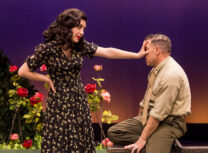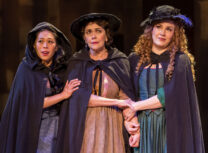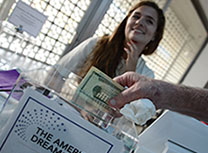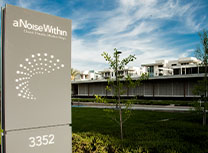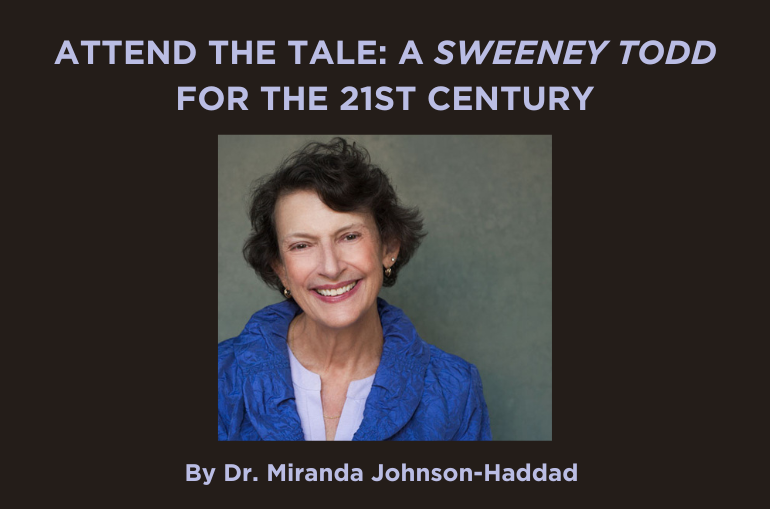An Interview with Charles Morey
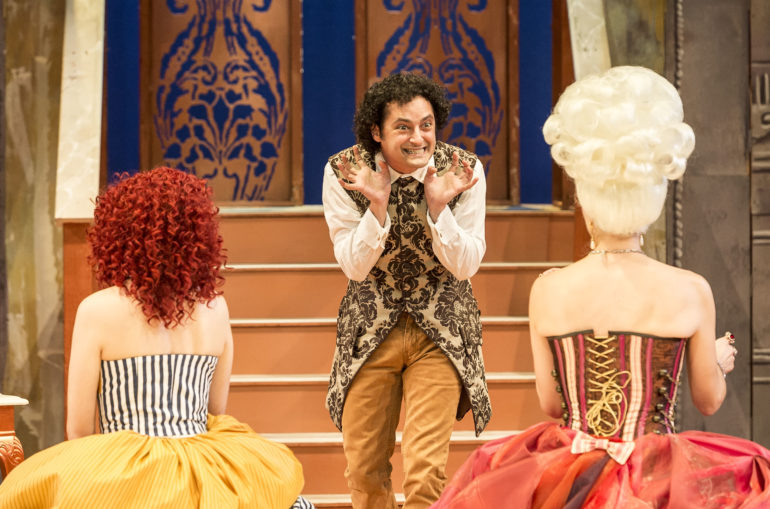
By A Noise Within
February 10, 2015
David Andrusia interviews Figaro playwright Charles Morey. Light is shed on the adaptation process of this fierce—and very funny—French farce!
Meet the Author! Charles Morey give a very special free symposium on March 4th at 6pm before our 7:30 preview.
DA: We share a deep, dark secret. We’re both French lit fans who never read the Beaumarchais original. Horrors!
CM: Yes, I am somewhat embarrassed to admit that I had never read The Marriage of Figaro before the Pearl Theatre Company in New York approached me about commissioning an adaptation. Or I may have read it in graduate school but didn’t remember much if anything–I knew it only as the source of Da Ponte’s libretto for the famous Mozart opera. But when I did read it, I was immediately taken by how funny it is. I love farce. I’ve written two and directed many and Figaro has all the elements of classic farce. When I got back to the folks at the Pearl I had to say, first, that if they wanted a faithful translation of the play, they should look to another playwright – my French isn’t really good enough to be a traducteur. Second, I was much more excited about doing a sharp, colloquial modern adaptation that would tap the parallels between late 18th century French society and our own – while still respecting the basic dramatic structure and period of the play.
DA: Parbleu! So how free is your adaptation, Charles?
CM: Very. Those who know the original will recognize numerous deletions, condensations, elaborations and diversions, not to mention occasional whole cloth additions to Beaumarchais’ text. I have seriously reduced the cast size, eliminating Beaumarchais’ ensemble of singers and dancers; as well as cut, combined, doubled and tripled characters in order to make it economically viable for a contemporary theatre company. Most important, I have tried to remain faithful to the joyously anarchic and slyly subversive spirit of the original while making it as funny, accessible and politically relevant to twenty-first century audiences as it was to those of Beaumarchais’ even more turbulent times.
DA: ANW patrons have made it quite clear that they love French comedy. How is Figaro different from other French plays of the period, and what makes it unique?
CM: There is a sizeable gap in the French theatre – or perhaps it is mainly in my knowledge – between the great dramatists of the 17th century: Molière, Corneille and Racine, and the late 18th-century work of Beaumarchais. Voltaire somewhat fills that gap, but in the Anglophone world we know him mostly as an Enlightenment philosopher and satirist (principally, through Candide), not as a playwright.
Beaumarchais’ work falls in the tradition of Molière’s prose comedy The Miser and his one-act farces and departs fairly radically from the formal neo-classicism of Corneille and Racine who wrote in strict poetic forms and the classical confines of Aristotelian ideals of drama. But there is a direct line that one can draw from classic Greek and Roman farces through the Commedia dell’arte, Goldoni and Molière to Beaumarchais.
DA: Interesting. And what elements set Beaumarchais apart in this literary arc?
CM: Beaumarchais’ work is somewhat unique in that it was far less formal, more colloquial – focused equally towards the haute bourgeoisie as well as the aristocracy and aimed to be both popular and populist.
DA: Charles, which aspects of the play do you think most appeal to modern audiences?
CM: The play rides on its humor of course and is very funny and accessible. I have tried to write a play that skewers notions of upper class entitlement with humor and wit. As I worked through the original text and began to read a bit about Beaumarchais, I was surprised and intrigued to learn how controversial the play had been in its time and what a profound impact it had on the politics and history of late 18th century France. Upon hearing the play for the first time, Louis XVI is quoted as having said – in a comment full of unconscious irony, “It would be necessary to destroy the Bastille in order for the presentation of this play not to have a dangerous consequence.” And the revolutionary Georges Danton remarked, “The Marriage of Figaro caused the French Revolution.” Louis XVI banned the play for several years but was ultimately prevailed upon by Marie Antoinette to allow its presentation at court.
DA: How perfect for our seasonal theme—that’s REVOLUTIONary, indeed!
CM: True, though at first glance, for a contemporary reader, the original doesn’t appear to be wildly subversive. But, when you read more closely it becomes clear that underneath the humor is an upending of the social order that is fundamental to the farce form itself and a deep populist anger that resonates very distinctly in an age when income inequality has yet again become a societal issue. The contemporary political relevance became something that really excited me. It also intrigued me how self-referential the play was to its audience in 1784. Everyone who saw it knew the central character was based upon Pierre Augustin Caron de Beaumarchais himself and Figaro’s life, troubles and escapades mirrored those of Beaumarchais. The dramaturgical question became: how to reflect that sort of self-referential quality for an audience most of whom would know little of Beaumarchais? My answer was to take a sometimes meta-theatrical approach to this adaptation that would allow Figaro to play directly with the audience and share the overtly theatrical context of the piece.
DA: And yet many of the themes are incredibly relatable to today’s world, yes?
CM: Certainly the idea of income inequality and the relationship of the powerful to the less privileged has been very much in the forefront of our national consciousness – and very prominent in my consciousness – since the financial debacle of 2008.
DA: That may explain why your play enjoyed such a resounding reception in New York. How would you describe Figaro to someone with no knowledge of Beaumarchais?
CM: All right, let’s see (smiles). Figaro is fast, funny, tart, smart and provocative. May I quote The New York Times?
DA: Please do—because if you don’t, I will!
CM: OK, here goes: “ Mr. Morey’s mockery of ruling-class entitlement rekindles that irreverence while also getting in some amusing swipes about the battle of the sexes… the farce takes aim at ruling-class entitlement just as surely today as it did in pre-Revolution France. … Charles Morey’s spry adaptation of The Marriage of Figaro taps its 21st-century parallels with a nimble hand.”
DA: Nimble hands are good! Now, Charles: What modern comedies would you compare Figaro to?
CM: Downton Abbey springs to mind, but it is a much gentler view of upper class entitlement and the serving class who support them than Beaumarchais’ or mine – nor is it nearly as funny! It might be closer to the (now old) movie 9 to 5 or the newer The Wolf of Wall Street— though again much funnier, if I do say so myself.
DA: I’ll say so, too! I reread the play after we first spoke and was struck by just how funny it is.
CM: Thanks much. Figaro is a funny man in a very funny play. I like to think both Groucho Marx and Bugs Bunny are his comic heirs!
Join us for the West Coast Premiere of Charles Morey’s Figaro. Previews start on March 1st! Click here for more information and click here to purchase tickets now.
David Andrusia is the Marketing Director at A Noise Within.
Contact him at 626.356.3123 or dandrusia@anoisewithin.org.
